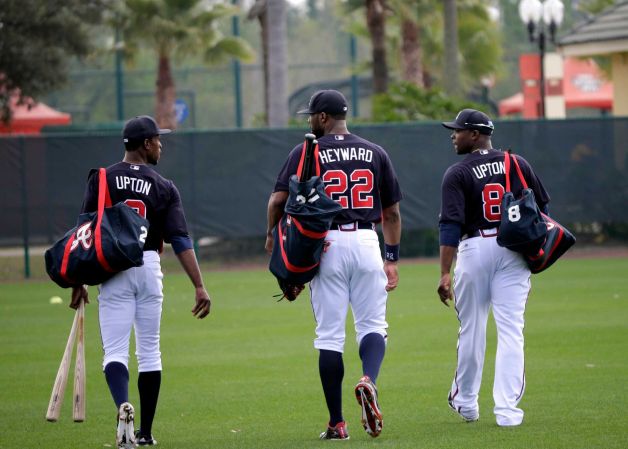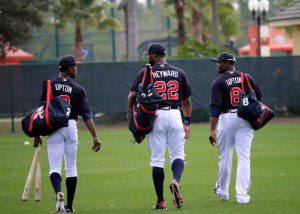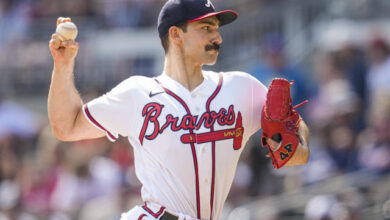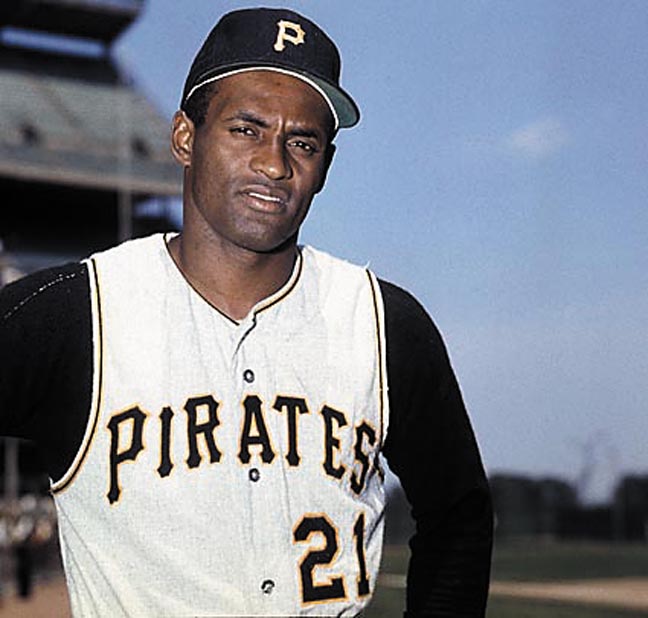

Following a hot stove winter where the Atlanta Braves made extraordinary moves to keep pace with the Washington Nationals, fans everywhere want to know if the Nats will repeat as National League East Division champions in 2013.
If any club has enough talent to knock the Nationals from their perch, it’s the Braves.
Simply put, the talent these two clubs have acquired has pushed the Philadelphia Phillies out of the conversation. Atlanta and Washington are now headed straight into a battle that will keep things interesting all the way through September.
The biggest news of the offseason for either club was the Braves stacking their outfield with the Upton brothers — B.J. and Justin, who are nestled alongside slugger Jason Heyward, giving Atlanta, arguably, the most formidable trio of outfielders defensively and offensively.
B.J. Upton has apparently morphed into a more powerful hitter while still struggling with patience at the plate. Last season was the first year in his career he finished with an OBP of less than .300. Meanwhile, he struck out a career high 169 times in 633 plate appearances (26.7 K percentage). His ability to shine elsewhere statistically has cast an enigmatic shadow over his career, though.
B.J.’s younger brother is another story. Justin Upton has been getting questioned hard by pundits for his loss of power in 2012. While his struggles at the plate last season are cause for concern, it’s hard to neglect his near-MVP season the year before when he was only 23 years old. Dating back to 2008, it seems Upton struggles every other year. In calendars with years that end in an odd number, Upton has performed inexplicably well.
Of lesser significance, but noteworthy nonetheless, the Braves also brought in an able-armed reliever to refortify what is already the best bullpen in baseball. Like Justin Upton, RHP Jordan Walden is coming off of a down 2012 after excelling in 2011. Despite that, Walden has maintained an average of nearly 12 strikeouts per nine innings pitched. By coming to Atlanta via the Tommy Hanson trade, this reliever will work wonders while having much less pressure than he had with the Los Angeles Angels over the course of the past two seasons. The acquisition of Walden is flying under the radar but will prove to be very important in Atlanta’s effort to topple the Nationals in the NL East.
Meanwhile, the Washington Nationals made some heavy-handed moves of their own to extend their 2012 success into an atmosphere of dominance for the ball club inside The Beltway.
By trading for Denard Span from the Minnesota Twins, the Nats finally landed their much sought after centerfielder. It gets even better for D.C. Span is also the leadoff hitter Washington has been searching for since rejuvenating its franchise last season. Span comes with a relatively recent yet exhaustive concussion issue, but he claims he is beyond that now. It showed in 2012. Last season, Span’s numbers crept near the levels of where they were in his first two seasons of big league action (2008 & 2009).
Aside from Span, the Nationals also surprised many folks and signed RHP Rafael Soriano. In 2012, Soriano reemerged as one of the best closers in baseball after falling out of that pack the year before. Soriano posted 9.18 strikeouts per nine innings pitched and a 24.7 K percentage. With Soriano locked in as the closer, last year’s tandem of Drew Storen and Tyler Clippard will resort to setting up.
However, the aforementioned acquisitions do little to settle the debate as to whether or not Atlanta can prevent Washington from becoming two-time NL East champions. Let’s look at it from another angle.
Below is a comparative chart of Bill James’ projected strikeout percentage for the projected starting lineup for each club.
As you can see, there’s a significant gap in the average strikeout percentage between the two clubs. For comparison sake, the 2012 Miami Marlins finished with a K percentage of 20.3, which ranked sixteenth in baseball. The St. Louis Cardinals finished with a comparatively close K percentage of 18.8, which was ninth in all of baseball.
Of course, the difference in K percentage does not tell the entire story. Below is a comparative chart of Bill James’ projected strikeouts per nine innings pitched for the projected rotations of each club.
Clearly there’s a comparative advantage favoring Washington. One wild card to this math is Braves RHP Brandon Beachy, who will be expected to return from Tommy John surgery sometime in June or July. Beachy is projected to serve a 9.77 K/9. Once Beachy is cleared to return, he will more than likely settle in as the number two pitcher in Atlanta’s rotation with ace potential.
The Braves will have a comparative disadvantage in strikeouts by batter and pitcher. Sure, this does not take into account other facets of the game such as defense and other metrics, but the projected high rate of strikeouts for the Atlanta lineup is recognized as a chief concern among pundits entering this spring.
Additionally, reversals of fortune could occur for both clubs. Third base is open in Atlanta, which could reignite the passion to play for Chipper Jones and subsequently bring him out of retirement. Better yet (for the future), Joe Leonard could be brought up and provide some much needed help at the hot corner if his ability progresses quicker than expected.
On the other hand, the Washington Nationals appear set to win a second consecutive division title. The D.C. rotation is more stable than Atlanta’s. Washington’s lineup is more likely to produce at a slightly higher capacity as well.
No one is saying the Braves don’t have a chance. This is merely food for thought on what should be the most exciting race to watch in 2013. There’s no doubt Atlanta possesses the talent to be one of the best teams in the NL, but there is a team that appears slightly better than the Braves resting in their own division. Consider Washington having the edge in 2013.





